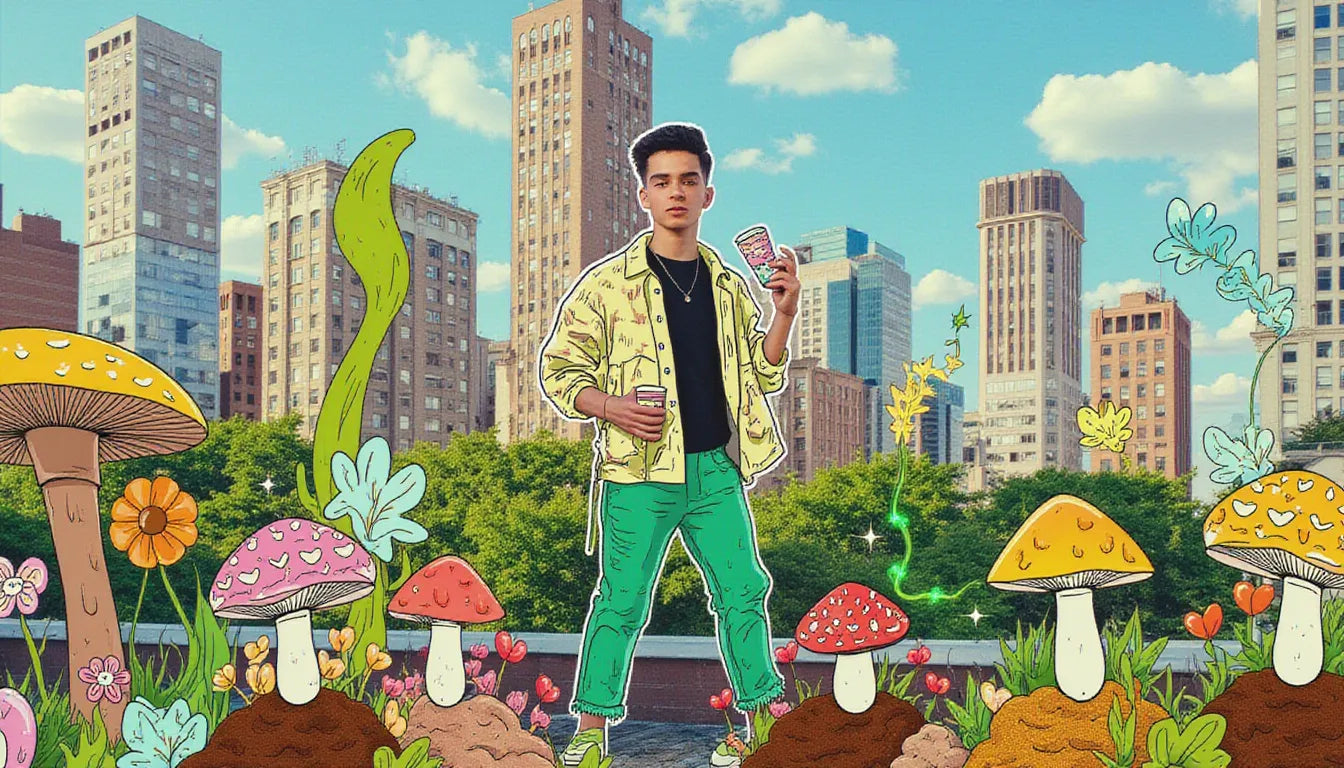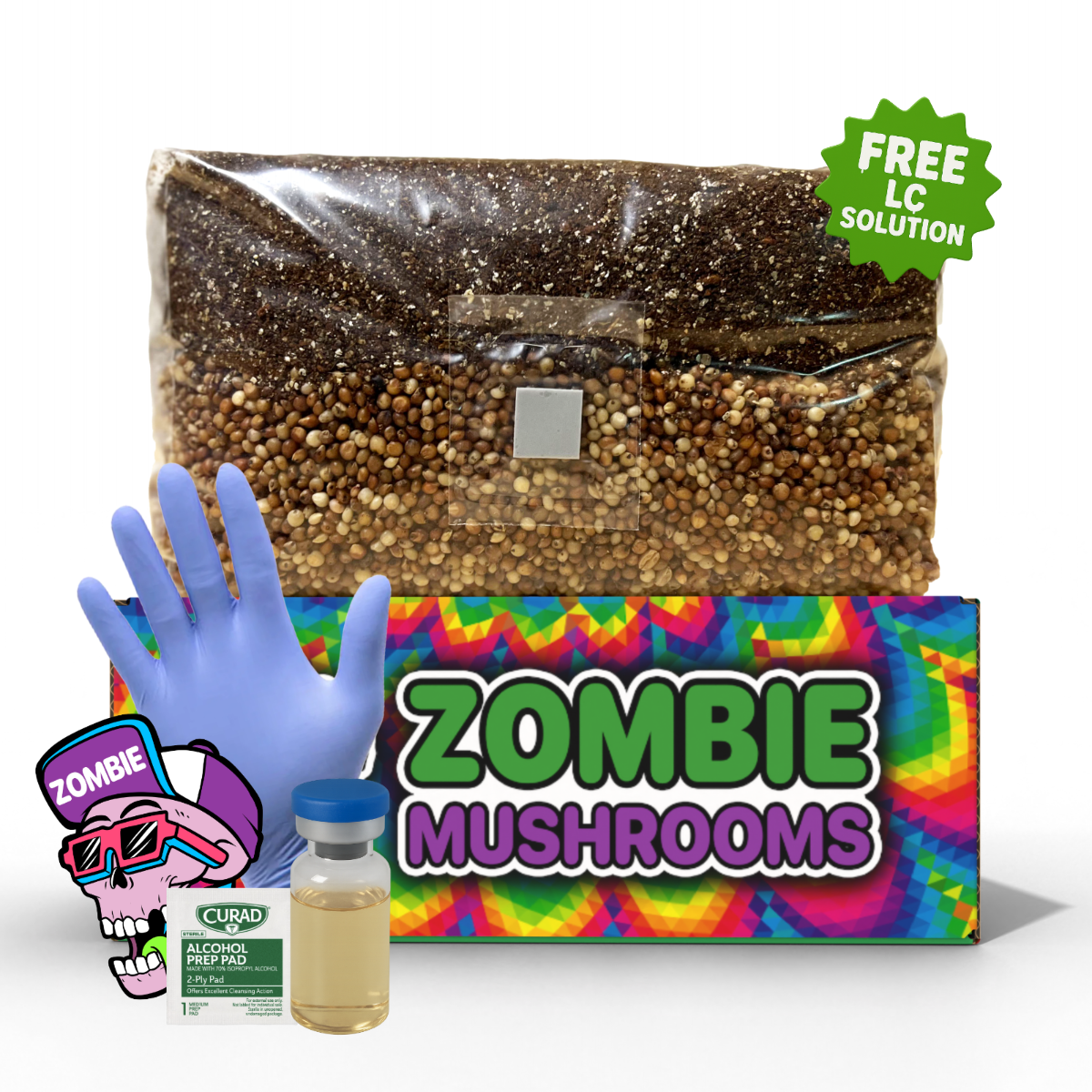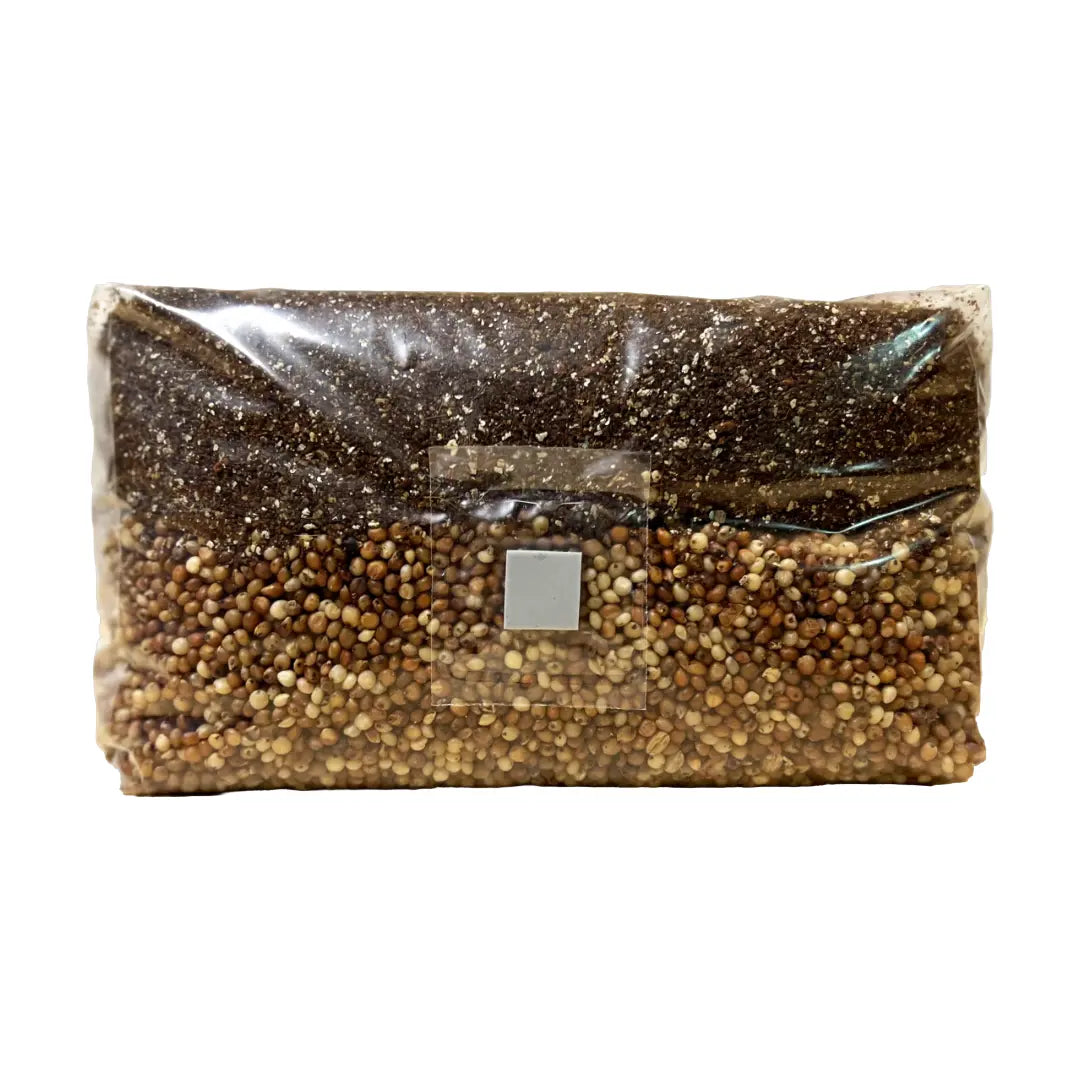⬇️ Prefer to listen instead? ⬇️
- Urban mushroom farms can produce up to 25 pounds per square foot each year with very little water and energy.
- Packaging and materials made from mycelium are becoming good choices instead of plastics and insulation.
- Fungi turn food trash like coffee grounds and brewery leftovers into protein you can eat.
- Urban mushroom farms use spaces that are not used much, like basements, shipping containers, and garages.
- Growing mushrooms locally makes jobs in the community and helps people in areas that don't have easy access to food get their own food.
As concern grows around the climate crisis and resource scarcity, cities are changing how they produce food. One exciting new way is urban mushroom farming. This type of farming has little impact, produces a lot of food, and uses underused spaces and waste to make food full of nutrients. Earth Day reminds us we need to live sustainably. Looking into how mushrooms fit into this shows a simple, local solution. People are growing them in backyards, basements, and on rooftops everywhere. Our mushroom grow kits are a practical way to live more sustainably—fresh food, less waste, right at home.

What Is Urban Mushroom Farming?
Urban mushroom farming means growing mushrooms in cities. People usually grow edible or medicinal kinds. Most crops need lots of land, sun, or good soil. But mushrooms grow well in small, controlled places. This makes them right for cities where space is hard to find and costs a lot.
Fungi need darkness, warmth, steady moisture, and something to grow on (substrate). You can get all of this inside. Because of this, city growers can set up their farms in many unusual spots. They use abandoned warehouses, shipping containers with controlled heat, underground tunnels, and even closets and garages. From big, busy cities like New York and London to small towns everywhere, people are finding out you don't need a field to grow food. You just need fungi.
These operations vary in scale:
- Micro-farms operated in community centers or homes
- Mid-scale co-ops producing for local CSAs (Community Supported Agriculture)
- High-tech vertical farms using AI to get the best production
No matter how big or small, the farms share one main thing: local food systems that are spread out and focus on being good for the environment and using resources well.

Why Mushrooms? The Unique Biological Advantage
Mushrooms are different from regular crops in many good ways. These make them a great choice for farming that's good for the planet:
No Sunlight Required
Because mushrooms are fungi, they don’t photosynthesize. This means you can grow them fully inside. So you can grow them all year without needing outside weather.
Rapid Growth Cycles
Many mushroom varieties—including oyster and shiitake—grow incredibly fast. In as little as 10 to 14 days, you can go from spore to harvest. This means you can grow many batches all year. It gets the most out of the space and makes the most money for city farmers.
High Efficiency and Yield
Mushrooms use space much better. According to Penn State Extension, mushrooms can produce 25 pounds per square foot each year (Beyer, 2017). For farming, that amount of production is great. This is true since they need little to grow.
Nutritional Powerhouses
Mushrooms have lots of protein, fiber, B vitamins, antioxidants, and key minerals like selenium and potassium. They feel meaty and taste savory (umami). This makes them a popular plant-based choice instead of meat. It also helps make them more appealing for being good for the planet.
Grows on "Waste"
Maybe most important, mushrooms grow on things that would just be thrown away. This includes coffee grounds, sawdust, corncobs, straw, paper trash, and other woody plant stuff. These things, when cleaned well and given mushroom spores, become great beds for healthy fungi to grow.

Sustainability by Design: Mushrooms as Waste Converters
Urban mushroom farming takes a big problem for the planet—organic waste—and makes it useful. Coffee shops dump thousands of pounds of spent coffee grounds daily. Breweries offload mountains of nitrogen-rich spent grain. Juice bars discard pulpy fibrous plant matter. Most of this goes into trash dumps. It breaks down without air and lets out methane. Methane is a greenhouse gas much stronger than carbon dioxide.
Enter mushrooms.
Mycelium is the root-like part of fungi. It eats this kind of woody organic stuff easily. Fungi are good at breaking down complex stuff in plants, like lignin and cellulose. Most bacteria can't break these down. City mushroom farms use this trait. They put food waste right back into the food system.
This is more than just clever recycling. It helps the environment a lot:
- Reduces landfill overflow
- Lets out less methane
- Turns waste with lots of carbon into food you can eat with little carbon
- Makes leftover material that can become compost to make soil better after you pick the mushrooms
Americans throw away an amazing 30 to 40% of the food supply every year. This is over 133 billion pounds of trash yearly (USDA, 2010). Turning even a little of this waste into food makes it easier on trash systems. And it feeds people using very little. This is clearly good for farming that lasts.

Comparing Resource Efficiency: Mushrooms vs Traditional Crops
Water Usage
Most regular crops, like fruits and vegetables, need a lot of water. Mushrooms need very little water. They grow inside where it's humid. So the water is used again in the growing area. Some setups use misting systems with timers to reduce evaporation and overspray. Depending on the species, mushrooms use up to 90% less water per pound than vegetables like lettuce or tomatoes.
Energy Consumption
Mushroom farms do need some energy to keep the air moist, warm, and moving. But they need much less energy than big farms that use water pumps, sprinklers, and field lights. Also, new things like using the sun's heat or AI to control the air are making city mushroom farms use even less energy.
Chemicals and Pesticides
Most mushrooms grow in closed, clean areas. This helps them naturally resist bugs and sickness. This means you don't need pesticides or weed killers. Regular field crops get these treatments often. Not using chemicals makes food safer and the environment cleaner.
Soil and Land Requirements
Mushrooms are not grown in soil. This avoids problems like soil running out, washing away, or having poison. And since they grow upward in stacked beds, they use much, much less land than field crops.
Mushrooms and the Circular Economy
A "circular economy" is a way of planning things. It encourages using resources over and over. This means not needing new materials as much and making very little trash. Urban mushroom farming fits this idea just right.
Input → Output → Reuse:
- INPUT: Waste materials (coffee grounds, agricultural byproducts)
- OUTPUT: Edible mushrooms + spent substrate
- REUSE: Spent substrate becomes compost or animal feed
Also, growing fungi is leading to new materials and ideas beyond food:
- Packaging made from mycelium instead of Styrofoam
- Biodegradable building panels and insulation
- Vegan leather textiles used in fashion and footwear
By using mushrooms not just for food but for many types of products, city growers take part in a system that rebuilds. It's one where everything gets a second life.

Urban Accessibility and Food Equity
Food deserts are places in cities where it's hard or impossible to get food that costs little and is good for you. This is a problem that doesn't go away. Urban mushroom farming gives a small answer that can do a lot. It costs little, works in different spaces, and gives results fast. This makes mushrooms a great crop for community food projects.
Community projects in cities like Detroit, Oakland, and Chicago have already started mushroom-growing classes in places like:
- Community centers
- Groups that don't make profit and teach people about food
- School gardens
- Programs helping people after they leave jail
These projects do more than make food. They teach people, give them power, and help them connect.
Mushrooms don't need a lot of land or costly things to grow. So most people can learn to grow them in small places. This makes growing food open to more people. It brings more people into farming that is good for the planet, no matter how much money they make, if they have land, or if they've farmed before.

Supporting Local Economies & Job Creation
The city mushroom economy helps more than just farmers. It gets a whole network going:
- Substrate suppliers (e.g., coffee shops, breweries)
- Moving and handling goods (especially for CSA sign-ups)
- Retail (grocery co-ops, farmers markets)
- Cooking links (restaurants that get food straight from the farm)
Each part of this network creates jobs and chances to start businesses. Also, growing mushrooms involves doing things by hand—like adding spores, picking, and packing. This makes it a great place for programs that teach skills. It works especially well for:
- Youth employment programs
- Programs that teach new job skills
- Programs for people who are healing or coming back into the community
When these farms sell nearby, money stays in the neighborhoods. And it means less pollution from moving food long distances.

Grow Your Own: At-Home Mushroom Kits
If you want to try farming that's good for the planet at home, mushroom grow kits are a fun, teaching way to start with little risk.
These kits often come with blocks already started with mushroom spores, tents to keep things wet, and guides. All you need is water and indirect light. Beginner-friendly strains like blue oyster or lion’s mane make it easy to see success within two weeks.
Kits have many good points:
- Need less of food systems that cause lots of carbon pollution
- Show how food is made
- Give a fresh food source that can be used again
- Help kids and families think more about being good for the planet
These kits work in apartments or classrooms. They make the food cycle easy to use and touch.

Innovation in Urban Farming: The High-Tech Frontier
Technology is changing how we grow mushrooms in cities:
Vertical Farming
Smart mushroom grow towers stack trays up high to use the most floor space. Machines spray water. Lights show how wet it is. And systems control the air. This lets farms keep growing conditions just right for big amounts of mushrooms.
AI and Sensor Integration
Artificial Intelligence (AI) systems check CO₂ levels, how wet it is, light, and heat right when it happens. They make conditions perfect by themselves. This grows more mushrooms and saves energy.
Advanced Genetics
Researchers are trying out new types, mixed strains, and faster growing times. New ways might make more kinds of mushrooms. They might also use how strong the mushroom genes are to make them last longer on shelves and be more healthy.
New Products
Mycelium is used more and more in industries not related to food. This includes containers that break down naturally, leather that's good for the environment, and things that help soil grow back. The fungi future isn’t just edible—it’s structural.

Potential Limitations and Solutions
Urban mushroom farming looks good, but it does have challenges:
- 💨 Too much wetness or not enough air can cause mold or bad stuff.
- 🧼 Keeping things clean is very important and needs training.
- ❄️ Some types need the air controlled. Not all homes can do this.
- 💵 Starting costs for buildings and equipment can be high in big farms.
But online groups, guides, and classes have grown a lot in the last ten years. Beginners have more support than ever to start small—then scale up.
Earth Day and Everyday: Why Mushrooms Matter
Earth Day makes us focus on acting fast for the environment. Urban mushroom farming shows up as a real solution people can join in on. Unlike faraway goals or ways to make up for carbon, growing mushrooms is fast, you can see it, and it works.
It hits several Earth Day goals in one action:
- Reducing landfill waste
- Saving water and energy
- Feeding communities locally
- Helping the circular economy idea
- Giving people the power to grow their own food
How Zombie Mushrooms Supports Sustainable Mushroom Cultivation
At Zombie Mushrooms, the goal is to give you the power to be part of the answer. Zombie Mushrooms offers good grow kits, liquid cultures, and agar plates. It gives you the tools you need to begin, no matter how much or how little space you have. These products aren't just fun things to try. They are steps toward living in a way that's better for the planet and more aware. Maybe you just like trying things out, or maybe you want to be a city farmer. Zombie Mushrooms helps make farming mushrooms that's good for the planet easy to get into, good to do, and makes a difference.
The Future of Food Grows Fungi
Urban mushroom farming isn’t just a good way forward. It might be one of the best answers to big problems in farming today, but not many people see it. It uses space well, works with waste, and can grow bigger. This makes it one of the most hopeful types of farming that's good for the planet in cities.
Earth Day makes us think about what we can do in a new way. Mushrooms softly tell us something small but strong: “Start here. Grow now.”
Ready to make less carbon pollution and help build a circular food future? Grow your own mushrooms and become a part of the myco-revolution.
Citations
- United States Department of Agriculture (USDA). (2010). Food loss and waste. https://www.usda.gov/foodwaste/faqs
- Food and Agriculture Organization of the United Nations (FAO). (2013). Food wastage footprint: Impacts on natural resources. https://www.fao.org
- Beyer, D. (2017). Sustainable mushroom farming. Penn State Extension. https://extension.psu.edu/sustainable-mushroom-production



